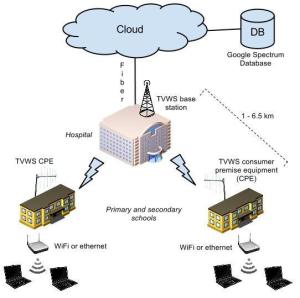Google’s first trial to use the unused channels in the broadcast TV spectrum to provide wireless broadband access launched in 2010 in Logan, Ohio. Since then, Google has shown a lot of interest in this topic and today it is launching its second trial. This time it is in Cape Town, South Africa, where Google partnered with a number of local organizations to connect 10 schools to the new wireless broadband network. The idea behind the trial, Google says, is “to show that broadband can be offered over white spaces without interfering with licensed spectrum holders.”

To get this new network off the ground, Google partnered with the Tertiary Education and Research Network of South Africa (TENET), CSIR Meraka, e-Schools Network, the Wireless Access Provider’s Association of South Africa and Comsol Wireless Solutions. The partners, TENET writes in its announcement today, will “periodically update ICASA, Sentech, the Joint Spectrum Advisory Group, broadcasters and other constituents on trial outcomes, including spectrum measurements and reported interference.”
Using these unused TV channels, Google argues, “has the advantage that low frequency signals can travel longer distances. The technology is well-suited to provide low cost connectivity to rural communities with poor telecommunications infrastructure, and for expanding coverage of wireless broadband in densely populated urban areas.”
The network will use a local version of Google’s spectrum database. Google launched the public trial of the U.S. version with the FCC in the U.S. earlier this month.
